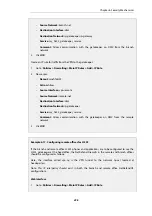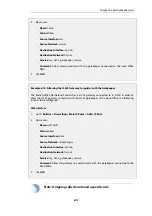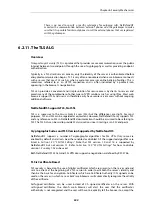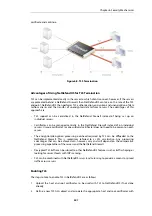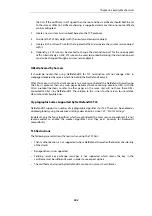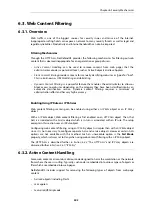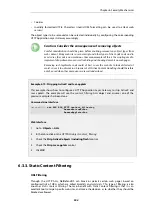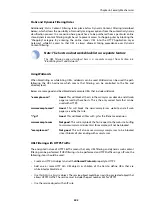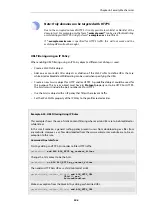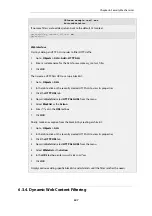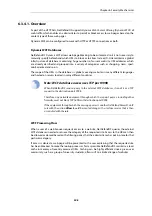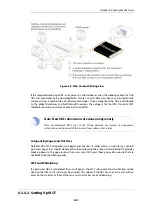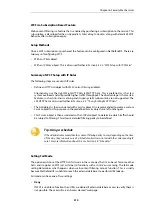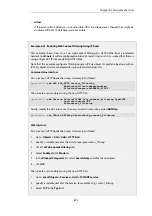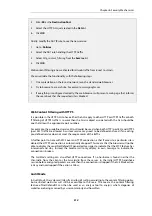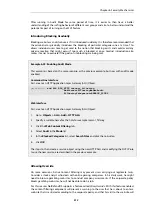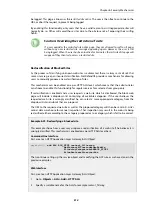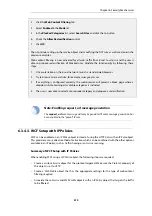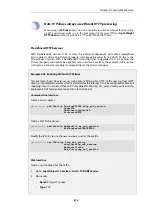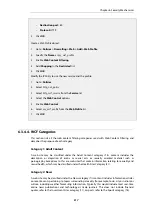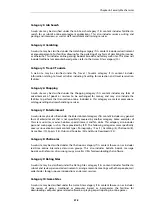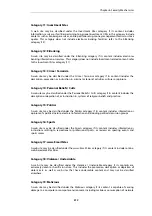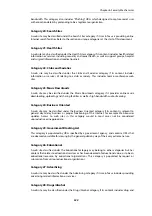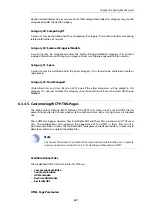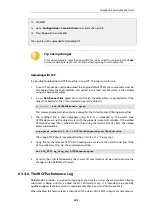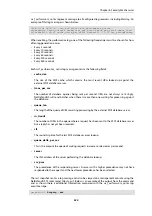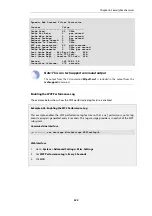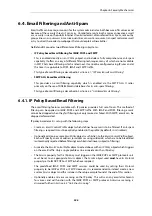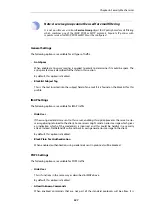
4.
Enter 80 as the Destination Port
5.
Select the HTTP ALG just created in the ALG list
6.
Click OK
Finally, modify the
NAT
IP rule to use the new service:
1.
Go to: Policies
2.
Select the
NAT
rule handling the HTTP traffic
3.
Select
http_content_filtering
from the Service list
4.
Click OK
Web content filtering is now activated for all web traffic from
lannet
to
all-nets
.
We can validate the functionality with the following steps:
1.
On a workstation on the
lannet
network, launch a standard web browser.
2.
Try to browse to a search site. For example,
www.google.com
.
3.
If everything is configured correctly, the web browser will present a web page that informs
the user about that the requested site is blocked.
Web Content Filtering with HTTPS
It is possible in the HTTP ALG to have either the ALG apply to either HTTP or HTTPS traffic or both.
If filtering of HTTPS traffic is to work then the
Service
object associated with the ALG should be
one that allows the appropriate port numbers.
For example, the predefined service
http-all
could be used when both HTTP (port 80) and HTTPS
(port 443) traffic are allowed. A custom service may need to be defined and used if an existing
pre-defined service does not meet the requirements of the traffic.
A further point to note with WCF over an HTTPS connection is that if access to a particular site is
denied, the HTTPS connection is automatically dropped. This means that the browser will not be
able to display the usual NetDefendOS generated messages to indicate that the WCF feature has
intervened and why. Instead, the browser will only display its own message to indicate the
connection is broken.
The
Fail Mode
setting can also affect HTTP connections. If no hostname is found in either the
ClientHello
from the client or the
ServerHello
from the server in the initial HTTPS handshake
session before encrypted packets are sent then the connection is dropped if the
Fail Mode
action
is
Deny
and not dropped if the action is
Allow
.
Audit Mode
In
Audit Mode
, the system will classify and log all surfing according to the content filtering policy,
but restricted web sites will still be accessible to the users. This means the content filtering
feature of NetDefendOS can then be used as an analysis tool to analysis what categories of
websites are being accessed by a user community and how often.
Chapter 6: Security Mechanisms
512
Summary of Contents for NetDefendOS
Page 30: ...Figure 1 3 Packet Flow Schematic Part III Chapter 1 NetDefendOS Overview 30 ...
Page 32: ...Chapter 1 NetDefendOS Overview 32 ...
Page 144: ...Chapter 2 Management and Maintenance 144 ...
Page 284: ...Chapter 3 Fundamentals 284 ...
Page 392: ...Chapter 4 Routing 392 ...
Page 419: ... Host 2001 DB8 1 MAC 00 90 12 13 14 15 5 Click OK Chapter 5 DHCP Services 419 ...
Page 420: ...Chapter 5 DHCP Services 420 ...
Page 573: ...Chapter 6 Security Mechanisms 573 ...
Page 607: ...Chapter 7 Address Translation 607 ...
Page 666: ...Chapter 8 User Authentication 666 ...
Page 775: ...Chapter 9 VPN 775 ...
Page 819: ...Chapter 10 Traffic Management 819 ...
Page 842: ...Chapter 11 High Availability 842 ...
Page 866: ...Default Enabled Chapter 13 Advanced Settings 866 ...
Page 879: ...Chapter 13 Advanced Settings 879 ...

